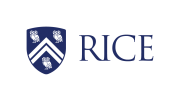The online simulations of projectile motion in physics on this page will help you to better understand how these phenomena are from the point of view of physics. We will discover what is the parabolic shot and other types of projectile motion.
What is projectile motion in physics
Projectile motion in physics analyzes how objects move under the influence of forces such as gravity, with parabolic shooting being a prominent case. This type of motion, observed in sports, experiments and technology, depends on variables such as initial velocity and launch angle, and is present in applications as diverse as ballistics, aerospace engineering and classical mechanics.
The parabolic shot
A particular case of great importance when studying projectile motion in physics is the parabolic shot. In parabolic shooting, an object is launched with an initial velocity that forms an angle with the horizontal. The projectile , which describes the motion of an object in the air under the exclusive influence of gravity and assuming, therefore, that the air does not exert any friction. The trajectory is a symmetrical parabola, hence the name parabolic shot.
Equations of the parabolic shot
During the parabolic throw, the horizontal velocity of the object remains constant, while the vertical velocity varies due to gravitational acceleration. The maximum height reached by the object in a parabolic shot and the horizontal distance reached depend on the launch angle and the initial velocity. The equations of the parabolic shot are:
x = x0 + v0⋅cos (θ)⋅t
y = y0 + v0⋅sin(θ)⋅t – 1/2gt2
where
x and y are the horizontal and vertical positions at instant t
x0 and y0 are the horizontal and vertical positions at initial instant
v0 is the initial velocity with which the object is launched
θ is the angle of launch measured from the horizontal
g is the acceleration of gravity (about 9.8 m/s2)
t is the time elapsed since the launch.
These formulas allow us to calculate the trajectory, time of flight, maximum range and maximum height of the projectile.
Applications of the parabolic shot
The parabolic shot has numerous practical applications and is the basis for calculations in fields as diverse as sports (shot put, hammer or javelin, baseball or soccer) or in many areas of engineering such as in the calculation of missile or rocket trajectories.
Other projectile motions in physics
In addition to the parabolic shot, there are many other types of projectile motions in physics.
Oblique throw with air resistance
This type of motion includes air resistance forces, which significantly alter the trajectory of the projectile, especially in applications such as ballistic vehicle design or professional sports where greater accuracy is sought.
Vertical shooting
Although it is a particular case of parabolic shooting, vertical shooting focuses exclusively on the vertical component of the motion. It is useful in free-fall studies or in applications such as rocket design to reach specific heights.
Parabolic throw with additional acceleration
This motion occurs when, in addition to gravity, another external acceleration is included, such as the thrust of an engine or rocket in flight. It is used in advanced simulations, such as missile trajectories in battlefields or space launches.
Projectile motion in non-uniform gravitational fields
In this case, the projectile moves under the influence of a gravitational field that varies in intensity or direction, as in space or satellite simulations.
Ballistic motions in fluids
These motions consider the effect of fluids, such as water or air, on the trajectory. It is common in studies of submarine dynamics or in water cannon research.
Projectile motions on inclined surfaces
This motion examines projectiles launched on non-horizontal terrain, such as hills or slopes. It is relevant in civil engineering or mountain rescue simulations.
In summary, these simulations of projectile motion in physics are an excellent tool to interactively delve deeper into these motions – give them a try!
Explore the exciting STEM world with our free, online simulations and accompanying companion courses! With them you'll be able to experience and learn hands-on. Take this opportunity to immerse yourself in virtual experiences while advancing your education - awaken your scientific curiosity and discover all that the STEM world has to offer!
Simulations of projectile motion in physics
- Project I
- Project Ii
- Composition
- Drone
- Ball
Projectile launch I
Launch a car from a cannon and try to hit the target! Learn about parabolic motion by launching various objects. Adjust parameters such as angle of throw, initial speed and mass. Explore the vector representation and add air resistance to investigate the factors that influence drag.
File
Composition of motions
This simulation helps us to understand that parabolic motion is actually the composition of two motions. A horizontal one with constant velocity and a vertical one with constant falling acceleration.
Giants of science
“If I have seen further, it is by standing on the shoulders of giants”
Isaac Newton

Léon Foucault
–

Augustin-Louis Cauchy
–
Become a giant


Mechanics, Part 2



Mechanics, Part 1



Dynamics and Control



The Basics of Transport Phenomena



AP® Physics 2: Challenging Concepts



AP® Physics 1: Challenging Concepts



Circuits for Beginners

































